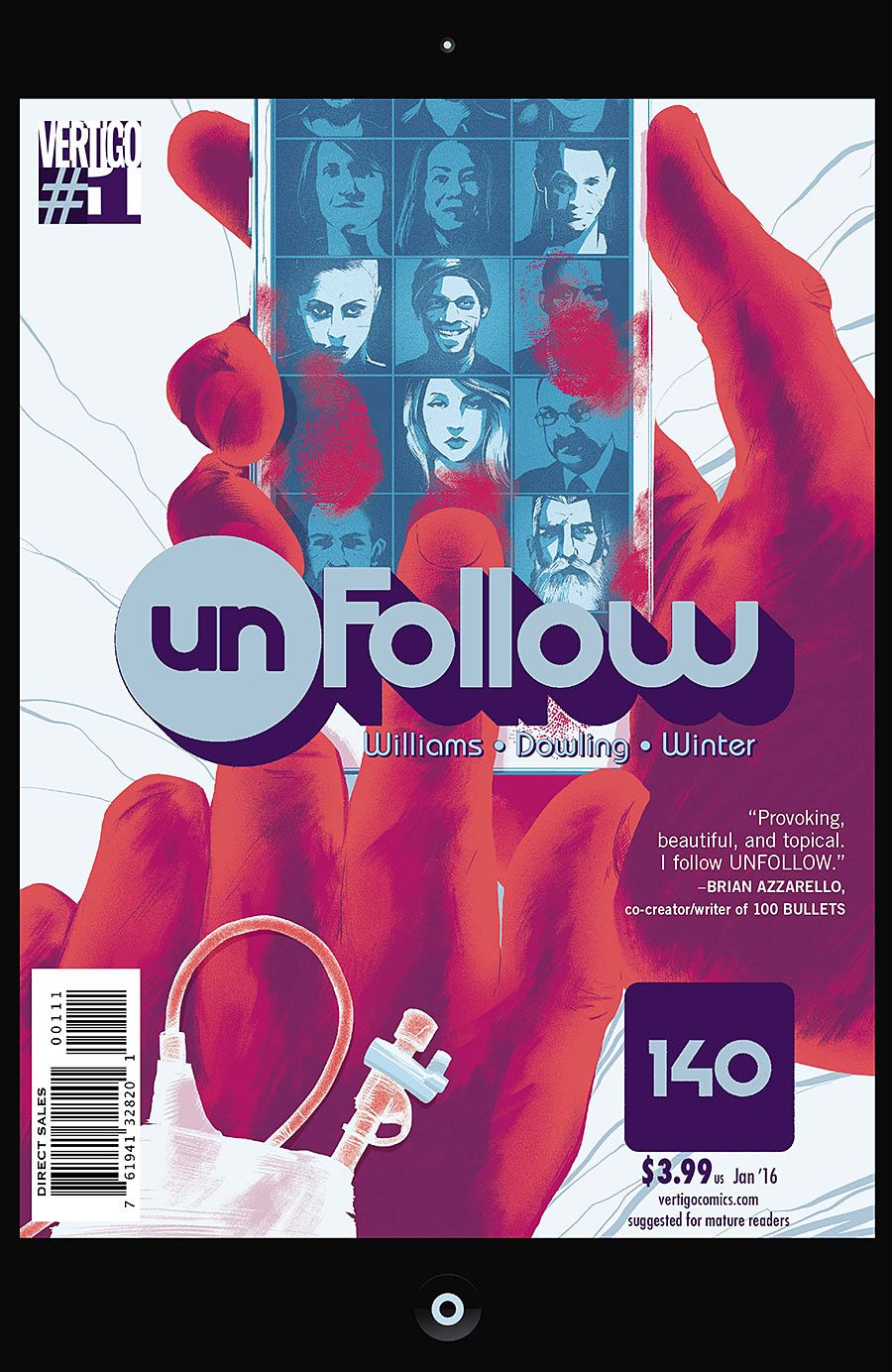Rob Williams and Mike Dowling's "Unfollow" #1 has a compelling elevator pitch: the inheritance of a vast fortune divided through social media. This fusion feels original, but -- other than giving a double meaning to the title "140 characters" and defining the number of contestants/combatants -- the Twitter-like service "Chirper" feels like window dressing on the core theme of a deadly game.
Sealed enclosures or islands were humans hunt each other was a well-established fictional premise even before Suzanne Collins' "Hunger Games" and was notably explored Agatha Christie's "And Then There Were None," William Golding's "The Lord of the Flies" and Richard Connell's "The Most Dangerous Game." Dowling's strong page and panel compositions and the symbolic meaning of a mask build an atmosphere of evil and dread in an attention-grabbing first scene, but that tension is quickly lost in the pages that follow, in which Williams spotlights individual characters.
There's a good amount of socioeconomic diversity to the cast in keeping with the global reach of social media. Williams' character introductions show how money might make a difference in particular lives. David gets the most panel time, and -- since he's a strategic thinker and a fighter -- odds are good he'll be one of the better-prepared players later on. There's also a nice twist when the reader finds out that more money might be unwelcome for Courtney, an angry rich girl, or that it may not matter to Ravan, a journalist. Though Williams introduces these characters through situations where death is a possibility, there's very little dramatic tension to any of it, because the readers know they'll live long enough to compete. Williams' dialogue creates distinctive voices and personalities for each character, but so far none of them have enough emotional depth or charisma to transcend stereotype.
Dowling's artwork is strong on composition and backgrounds, especially in the detailed foliage in the opening scene. That will serve the story very well later, which is when (I assume) more people will be running and hiding in the flora of the island. However, his linework for faces and bodies is too stiff, and the amount of detail he piles on sometimes works against him, when the essential gestures and shapes get lost amid too many extraneous lines. The stiffness in the faces, in particular, makes it more difficult for readers to empathize closely with the spotlighted characters.
The scene with a leopard has great visuals. Dowling's linework shines here, as does Quinton Winter's skill and range as a colorist. The scene's shadows and subdued golds contrast beautifully with the translucent, airy blues and greens in the opening scene. Narratively, though, the leopard is a waste of time. Foreshadowing is unnecessary since the reader can easily guess already there's going to be a deadly competition among the "heirs." Larry's captions from his Chirper feed and his hunger for the "truth" in the second scene spells it out. The leopard's speech also strains credulity, especially when it not only talks but uses casual, derogatory slang.
Whether the leopard is a hallucination or hocus pocus, it's unnecessary within this Man Vs. Man premise, which has historically always been about revealing the shocking ugliness and saving graces in human nature. Adding a talking leopard to the mix only muddies the thematic waters and the world building, unless Williams can make this element count in a big way later on.
The contemporary-feeling, technological details are fun and cleverly conceived, especially how the "140" app installs itself onto phones, but so far the introduction of social media and technology hasn't given "Unfollow" any more heft or insight into the world than older dog-eat-dog survival tales. "Unfollow" #1 relies too much on its concept and doesn't make the most of the inherent tension of its premise, but the story still has time to prove itself as the exposition unfolds in the next few issues.

